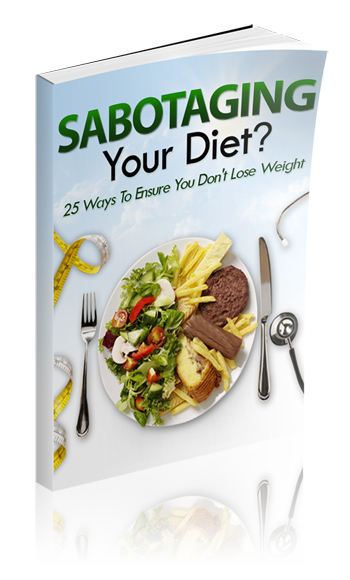Hi Everyone! Is D.I.E.T, a dirty word? No one likes to think about losing weight, but as you know from the BMI calculation, weight is one of the key component.
So what is the best way to lose weight? I decided to review 10 of the most popular diets to decide which diet I was going to follow on my quest to lose 2 BMI points by August.
I discovered that there a lot of diets available and not every diet is for everyone. Some are just plain stupid. But the ones listed below were recommended by U.S. News & World Report for 2016 and all are designed with one thing in mind: losing weight while getting you healthy and keeping you healthy to enjoy a long life.
You may have heard of most of them, but several were new to me. Your favorite diet may not be on the list. If you have one the works, let me know and I can add it to the list.
The key is to find one that works for you and to stick with it until you reach your goal. As with all diets, check with your physician first before making any lifestyle changes!
I have only given a brief synopsis of each diet here, but I posted a link to a top selling book if you want more information.
#1 – DASH Diet
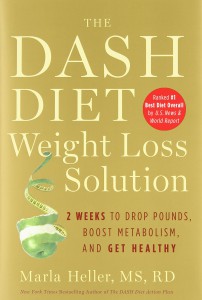 The DASH (Dietary Approaches to Stop Hypertension) diet was originally developed as a way to fight high blood pressure and not an overall diet for losing weight.
The DASH (Dietary Approaches to Stop Hypertension) diet was originally developed as a way to fight high blood pressure and not an overall diet for losing weight.
But it has been also been proven to be a great weight loss diet. The DASH diet works because it is based on all natural foods that have no artificial additives.
This top rated diet has been recommended by the American Heart Association and is relatively easy to follow.
The DASH diet works so well because it is based on eating plant-based foods such as: vegetables, fruits, whole grains, nuts and limited chicken and fish.
The DASH diet is satisfying because you are getting full on bulky foods such as vegetables and fruit. Plus, to quench your hunger you will be filling up on protein-rich and heart-healthy fats. You will no longer have cravings or go on the blood sugar roller coaster ride you have been on.
If you are one of those people who have what some call a “tire” around the middle, a muffin top, love handles, or have type 2 diabetes, using the DASH diet to lose weight and keep that weight off is perfect for you.
#2 – TLC Diet
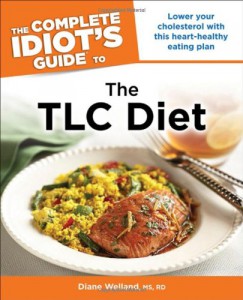 TLC (Therapeutic Lifestyle Changes) is a diet plan which was created by the National Institutes of Health for promoting cardiovascular health.
TLC (Therapeutic Lifestyle Changes) is a diet plan which was created by the National Institutes of Health for promoting cardiovascular health.
The TLC diet is designed to help you lower your “bad” (LDL) cholesterol levels by at least 8-10% in 6 weeks.
Although this diet is for improving your cholesterol levels more than providing a solution for weight loss, the two go hand in hand and you will lose weight.
How you ask? The TLC diet helps you to eliminate or reduce your fat intake, particularly saturated fat. Saturated fat is high in such items as fried foods (big in the U.S.), meats that are fatty and whole-milk.
Also cut back on your cholesterol intake by eating no more than 200 mg a day . Eat lots of fruits/veggies, whole grains, fish, no-skin poultry.
Here are the recommended amounts:
- Bread, cereal, rice, pasta, grain: 6-11 servings
- Vegetables: 3-5 servings
- Fruits: 4 servings
- Low-fat/Non-fat Dairy: 2-3 servings
- Meat (Fish or skinless chicken/turkey): +/- 5 oz.
#3 – Mayo Clinic
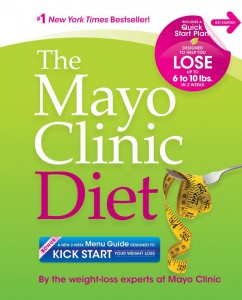 The Mayo Clinic Diet is a diet that will help you reduce your risk from heart disease, diabetes, sleep apnea, high blood pressure and diabetes which are all weight-related health problems.
The Mayo Clinic Diet is a diet that will help you reduce your risk from heart disease, diabetes, sleep apnea, high blood pressure and diabetes which are all weight-related health problems.
It emphasizes eating the right foods, discourages eating the wrong ones and mandates physical activity.
You can count on losing approximately 6-10 pounds in the first two weeks and about 1-2 pounds per week after that until you reach your weight loss goal.
The diet is actually broken into two parts where in Part 1 you will focus on 15 key habits. There is no calorie counting and you can snack on all the fruits and veggies you want. This part of the process lasts for two weeks.
The second part starts after two weeks and you will learn that no food group is completely off-limits. What you will be doing is learning a healthy eating pattern you can follow for life. You will also learn where the calories will come from when you decide what you are going to eat to help you lose or maintain your weight.
Here are some of the guidelines you will follow:
- Eat a healthy breakfast
- Create balanced meals
- Lots of fruit/veggies
- Whole grains/healthy fats
- Physical activity: 30 minutes/day (60 minutes if you’re motivated)
- Diaries: Food, goal and activity
- Natural Foods vs. minimally processed “real food”
#4 – Mediterranean Diet
 With the Mediterranean Diet you are eating traditional foods (and drinks) from countries which surround the Mediterranean Sea.
With the Mediterranean Diet you are eating traditional foods (and drinks) from countries which surround the Mediterranean Sea.
The Mediterranean Diet places an emphasis on olive oil, fish, vegetables, fruits and other healthy foods.
Overall, this diet is completely easy to follow and has had many positive reviews.
It emphasizes fruit, vegetables, fish/seafood, poultry/eggs, cheese and yogurt (in moderation), whole grains, beans, legumes, olive oil, nuts and flavorful herbs and spices.
Red meats and sweets are saved for special occasions. And, don’t forget, everything can be topped off with a splash of red wine (if you like wine).
Cooking your own meals is a breeze because of the wide variety of choices. You are also allowed to dine out as long as you eat about half of what is served to you on your plate. Share a meal or take half of it home to eat at another meal.
#5 – Weight Watchers
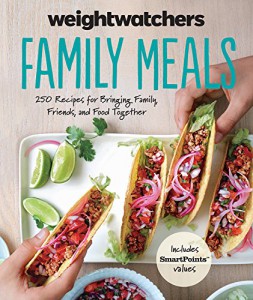 The Weight Watchers diet is probably one of the more familiar diets that you have heard of at least once in your life.
The Weight Watchers diet is probably one of the more familiar diets that you have heard of at least once in your life.
A lot of people love this diet because you can to it in your spare time online, attend weekly meetings or do both. It’s entirely up to you.
Weight Watchers has a “PointsPlus” program which assigns points to every food based on its protein, carb, fat and fiber content. The food choices that fill you up the most will cost the least amount of points and so on.
The fitness plan has a PointsPlus value assigned to activities which is listed on their online database. These count as extra food points.
Depending on how often you do an activity (i.e. 3-4 times/week) you can use these extra points on splurges such as a second slice of your favorite pizza, another beer or a special dinner out at your favorite restaurant.
#6 – Flexitarian Diet
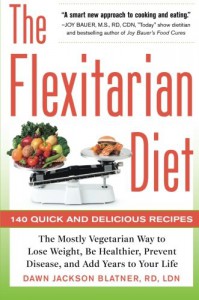 The Flexitarian diet wants you to add fruits, veggies, whole grains and plant-based protein to your meals.
The Flexitarian diet wants you to add fruits, veggies, whole grains and plant-based protein to your meals.
It is a well-known fact that those who adhere to the Flexitarian diet typically weigh 15% less than those who eat meat.
The reason people love the Flexitarian Diet is that it is flexible and vegetarian, hence the name.
Instead of not being allowed to partake in a juicy hamburger or steak once in a while, the diet gives you the flexibility to stray off the complete vegetarian route every now and then.
The overall diet is completely healthy so eating meat once in a while will not cause any harm
On the Flexitarian Diet you will be eating:
- Nuts, seeds, eggs, tofu, lentils, beans, peas (these replace your traditional meats)
- Fruits
- Vegetables
- Whole Grains
- Dairy
- Sugar
- Spices
The Flexitarian Diet will allow you to lose weight and keep it off. Exercise is an integral part of this process so you can’t skip on this part of the diet.
#7 – Volumetrics Diet
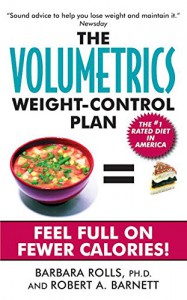 The Volumetrics Diet was designed by a nutritionist named Barbara Rolls, Ph.D. and is based off of her studies of dietary patterns and eating behaviors.
The Volumetrics Diet was designed by a nutritionist named Barbara Rolls, Ph.D. and is based off of her studies of dietary patterns and eating behaviors.
Her conclusions (and others) resulted in her discovering that the volume of food that people eat affects both how satisfied they feel and how much they eat
Her findings showed that a person will basically eat the same weight of food over a day to two-day period.
If a person wants to lose weight, they need only to lower the caloric intake in the portions of food they are consuming.
Her theory suggests that a person need only to increase their water and fiber content intake in order to feel full thus eating less calories and resulting in weight loss
You must eat 5 times a day including breakfast, lunch dinner and two light snacks along with a dessert.
#8 – Jenny Craig
 Jenny Craig is a commercial weight loss/diet program.
Jenny Craig is a commercial weight loss/diet program.
This is not only a diet program but a diet package because when you join you will get not only the pre-packaged, low-calorie food but also a consultant
There are 70 different prepackaged foods consisting of approximately 1,200 calories a day (depending on your height/weight).
On the Jenny Craig diet, you will also have access to online tools to help you plan, track meals and an exercise plan.
The claim is that you can lose up to 2 pounds a week if you follow their plan precisely. The only downfall to this diet is that you will be eating the plan food and restaurants are mostly off-limits.
Your consultant will develop a plan for you designed around your current weight, your fitness habits and motivation level and includes anywhere from 1,200 to 2,300 calories a day.
#9 – Ornish Diet
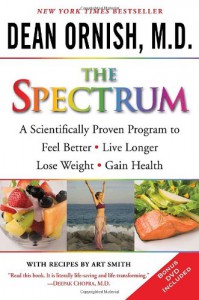 The Ornish Diet was designed with two concepts in mind: losing weight and maintaining a healthy heart by eating less heart-damaging fat
The Ornish Diet was designed with two concepts in mind: losing weight and maintaining a healthy heart by eating less heart-damaging fat
Dean Ornish’s book, “The Spectrum” describes how a lifestyle change which includes exercise, stress management, nutrition guide and emotional support all contribute to living longer and healthy.
His program has been criticized for the amount of fat intake restrictions which are below recommended guidelines.
The biggest obstacle to this diet is giving up the fat and staying within the 10% total caloric intake per day. The good news is that there are plenty of recipe books and meal plans that show you how to do this.
In order to participate in the Ornish Diet, you have to follow these guidelines:
- Avoid red/white meats
- Avoid oils and products that contain oils (avocados, nuts, full-fat dairy, sugar, olives, seeds)
- Eat as much of the following as you would like: fruits, grains, veggies, legumes and beans (these foods help you to feel full)
- Low or nonfat dairy in moderation: milk, cheese, yogurt
- Stop: smoking, drinking in excess
- Eat smaller meals throughout the day
#10- Biggest Loser Diet
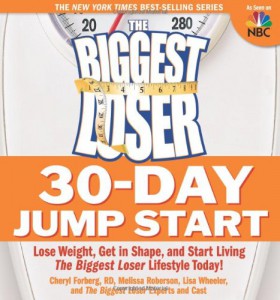 The Biggest Loser diet is named for the popular reality-based TV show of the same name.
The Biggest Loser diet is named for the popular reality-based TV show of the same name.
One of the more popular, in-depth books is “The Biggest Loser: 30 Day Jump Start”.
This diet is focused on disease prevention/reversal and weight loss.
The main objective is to learn about nutrition and a healthier you. There is even a “Biggest Loser Diet Pyramid” to assist you in learning about quality calories
Here is a sample of what they suggest you eat per day:
- Fruits/Vegetables (4 servings)
- Protein (3 servings)
- Whole Grains (2 servings)
- Extras (+/- 200 calories)
Exercise is a huge part of the Biggest Loser Diet plan and is not an option. Either you work out or you won’t lose the weight. It’s entirely up to you. If I were on this diet, I would find a way to add exercise to my weekly routine.
What’s Next?
A wide variety of diets have been presented. So you have a good selection to choose from. All of them have an underlying theme: cut back on the bad foods and replace them with the good foods.
Which one are you going to follow?
Dianna 🙂


